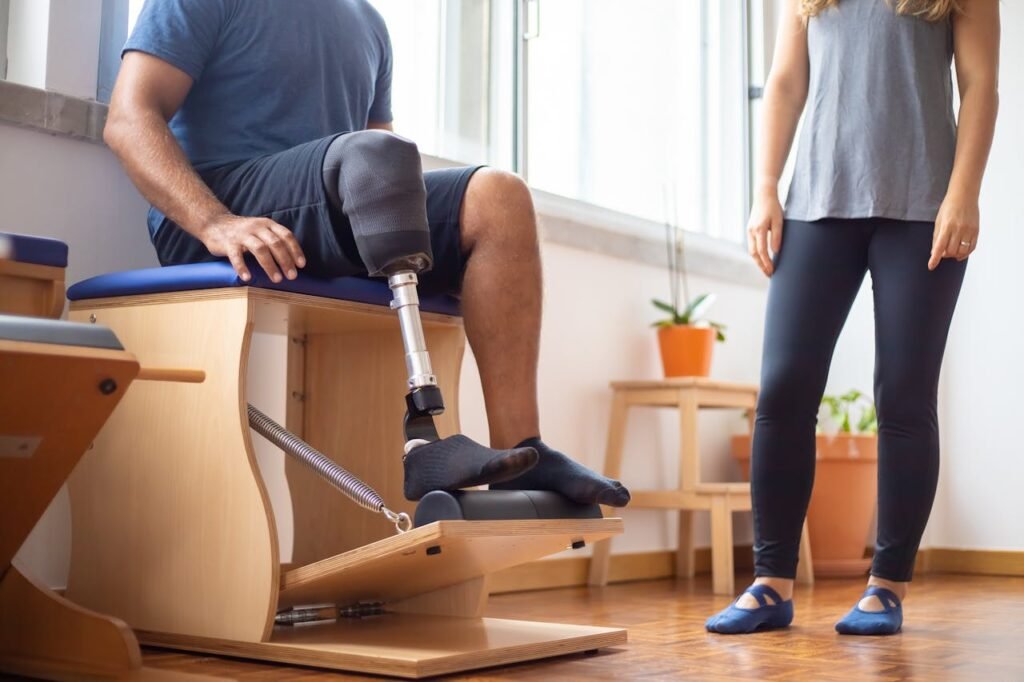Getting a new prosthetic is not a one-time event. It is a journey with small steps that build your strength, skill, and trust. Trial sessions help you feel how the limb fits, learn how it moves, and decide what works best for your daily life. The right number of sessions is different for each person, but the goal is the same for everyone: a safe, comfortable, and confident start.
In this guide, we keep things clear and simple. We explain what happens in each stage, how to prepare, how many sessions you may need, and how to get more value from every visit. You will also learn how our team at RoboBionics supports you with training, gentle coaching, and smart tools like our Grippy bionic hand, so you can return to work, family, and play with ease.
Why Prosthetic Trial Sessions Matter
Getting Used to a New Beginning
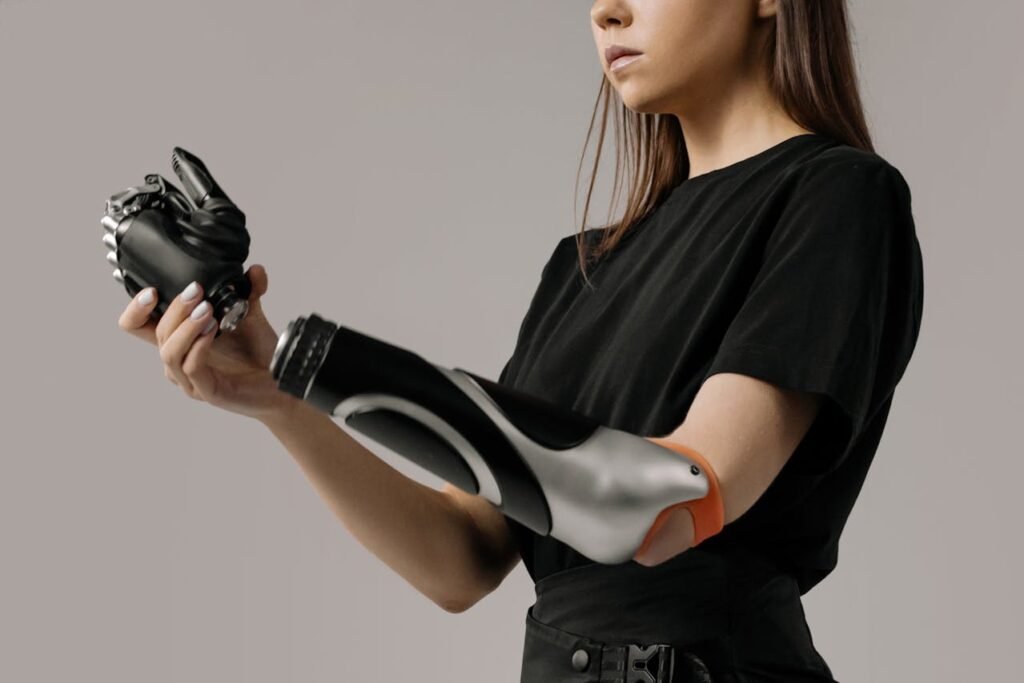
The moment someone gets a prosthetic limb, it feels like a mix of excitement and uncertainty. You’re ready to regain your independence, but your body also needs time to adjust.
A prosthetic limb is not like a pair of shoes that you can wear straight out of the box. It needs to fit your body perfectly and respond naturally to your movements. This process takes time and patience — and that’s exactly why trial sessions exist.
Trial sessions are where your prosthetist carefully adjusts, tests, and fine-tunes your new limb so that it feels like an extension of you. Without these sessions, even the best prosthesis can feel uncomfortable or hard to use.
Why One Size Never Fits All
Every person’s body is different. The size, shape, and muscle tone of the residual limb vary greatly from one person to another. Even two people with the same type of amputation may need very different fitting approaches.
That’s why prosthetic limbs are not “ready-made.” They are customized through repeated fittings. During trial sessions, small adjustments are made to ensure your socket, alignment, and control system work perfectly together.
It’s not just about comfort — it’s also about safety. A poorly fitted prosthesis can cause skin irritation, pressure sores, or pain. Regular trial sessions help prevent these problems and make sure your limb supports you the right way.
The Role of Trial Sessions in Building Confidence
Learning to use a prosthesis can feel strange at first. Your brain, muscles, and nerves are learning to communicate with something new. The first few times you wear it, you may feel unsure about how to move or balance.
Trial sessions are where you overcome that fear. With guidance from your prosthetist and rehabilitation expert, you slowly start to trust the device. You learn how to hold, lift, walk, or perform daily tasks again.
Each trial builds your confidence a little more. By the time your final fitting is done, you don’t just wear your prosthesis — you own it.
What Happens During a Prosthetic Trial Session
The First Meeting: Understanding Your Needs
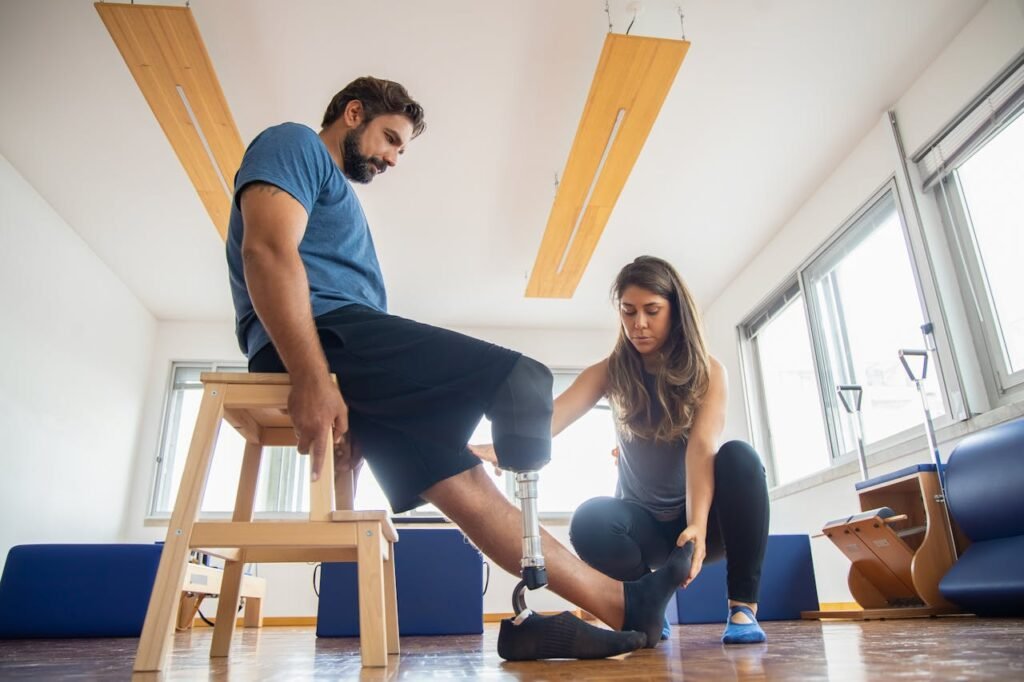
Before any fitting starts, your prosthetist takes time to know you — your lifestyle, work, hobbies, and goals. This first discussion is crucial. A prosthesis for someone who does desk work is very different from one made for someone who drives, cooks, or plays sports.
They’ll also examine your residual limb carefully, checking for skin condition, muscle strength, and sensitivity. These details guide how the prosthesis will be designed.
This stage sets the foundation for all the upcoming trials. The more openly you share your expectations and challenges, the more accurately your prosthesis can be tailored.
The Initial Fitting: Getting the Shape Right
In your first trial, you’ll be fitted with a “test socket” — a transparent or temporary version of the prosthetic socket. This allows your prosthetist to observe how your residual limb fits inside and how pressure is distributed when you move.
You might be asked to stand, sit, or perform simple movements while they take notes. The goal here isn’t perfection; it’s observation. Your prosthetist looks for any gaps, tight spots, or discomfort you might feel.
Adjustments are made on the spot. Sometimes, several test sockets are tried before getting it right. Each one brings you closer to the ideal shape and fit.
Testing Function and Comfort
Once the fit feels right, your prosthetist checks the function. If it’s a hand prosthesis like the Grippy™ Bionic Hand, they’ll test how well it responds to your muscle signals. You’ll practice opening, closing, and gripping objects.
If it’s a leg prosthesis, you might practice walking short distances to test balance and movement. Your feedback here is vital. If something feels even slightly off, your prosthetist adjusts it.
Remember, trial sessions are not about rushing. They’re about accuracy. Every small tweak ensures that the final prosthesis fits your life perfectly.
Learning to Control and Balance
A prosthesis doesn’t just replace a lost limb — it becomes part of your movement system. That means your body and mind need time to learn how to control it smoothly.
During trial sessions, your prosthetist or physiotherapist helps you practice correct posture and movement patterns. You’ll learn how to use your muscles in new ways to control your device.
If you’re using a myoelectric prosthesis like Grippy™, you’ll also learn how to generate steady muscle signals for better control. It takes a little practice, but once you get the hang of it, movements become natural.
Understanding Feedback and Sensations
Modern prosthetics often include feedback systems that simulate touch or pressure. RoboBionics’ Sense of Touch™ technology is one such example — it helps users feel the difference between soft and firm objects.
During trials, your prosthetist fine-tunes this feedback to match your comfort level. You might test how gently you can hold an object or how much pressure to apply when gripping something delicate.
This stage is deeply personal because it reconnects you to a lost sense — the ability to “feel” through your prosthesis. That’s what makes trial sessions so powerful.
How Many Trial Sessions Are Usually Needed
It Depends on the Type of Prosthesis
The number of sessions you need depends on what kind of prosthesis you’re getting. A simple mechanical limb might need fewer trials compared to a bionic one with sensors and motors.
For example, a below-elbow user might need three to four sessions for mechanical hands, while a myoelectric bionic hand might take five to six sessions for proper tuning and comfort.
These sessions are not fixed in number. They continue until both you and your prosthetist are fully satisfied.
Your Body’s Healing Process Matters
If your amputation is recent, your residual limb will still be healing and changing shape. In such cases, trial sessions may be spaced out over several weeks or months to allow the limb to stabilize.
Swelling, muscle tone, and skin sensitivity can all affect how well a prosthesis fits. Rushing through the process can lead to discomfort later. Taking it slow ensures long-term comfort and usability.
Your Comfort Comes First
At RoboBionics, we believe that comfort should never be compromised. Some people adapt quickly; others take a bit longer. The goal isn’t to meet a deadline — it’s to make sure your prosthesis feels completely natural.
If you ever feel pain, pressure, or irritation during a session, it’s a signal for adjustment, not endurance. A good prosthesis should never hurt. Your prosthetist will listen, adjust, and make sure every fitting moves you closer to a perfect match.
The Importance of Feedback
The success of each trial depends on how clearly you communicate what you feel. Don’t hesitate to speak up — even a slight discomfort can be important.
If your socket feels too tight, or your grip strength feels uneven, say so. Your prosthetist relies on your feedback to fine-tune everything.
Over time, you’ll notice a pattern: each session feels better than the last. That’s how you know you’re on the right track.
Preparing for Your Prosthetic Trial Sessions
Wear Comfortable Clothes
Loose, breathable clothing makes it easier for your prosthetist to examine and fit your limb. Avoid tight sleeves or pants that restrict movement.
If your fitting involves an upper-limb prosthesis, short sleeves are best. For a lower-limb one, wear shorts or clothes that give easy access.
Feeling physically comfortable during sessions helps you focus on learning and adjusting, not on your outfit.
Stay Relaxed and Open
It’s normal to feel nervous before your first session. But remember — this is your journey, and your prosthetist is your partner. They’re not just fitting a device; they’re helping you regain independence.
Try to stay calm and open-minded. Each session brings you one step closer to comfort and confidence.
Ask questions freely. The more you understand what’s happening, the smoother the process becomes.
Take Notes After Each Session
Every session is a learning experience. Write down what felt right, what didn’t, and any questions that came to mind later.
These notes help your prosthetist make better adjustments next time. They also help you track your progress and see how far you’ve come.
Keeping a small diary of your journey can be incredibly motivating.
Practice at Home
If your prosthetist gives you small exercises or grip practice, make time for them at home. Consistency helps your muscles adapt faster.
Even simple actions like holding objects, typing, or walking small distances strengthen your coordination with the prosthesis.
Think of it as training — not for the device, but for yourself.
Making the Most of Each Trial Session
Come with a Clear Mindset
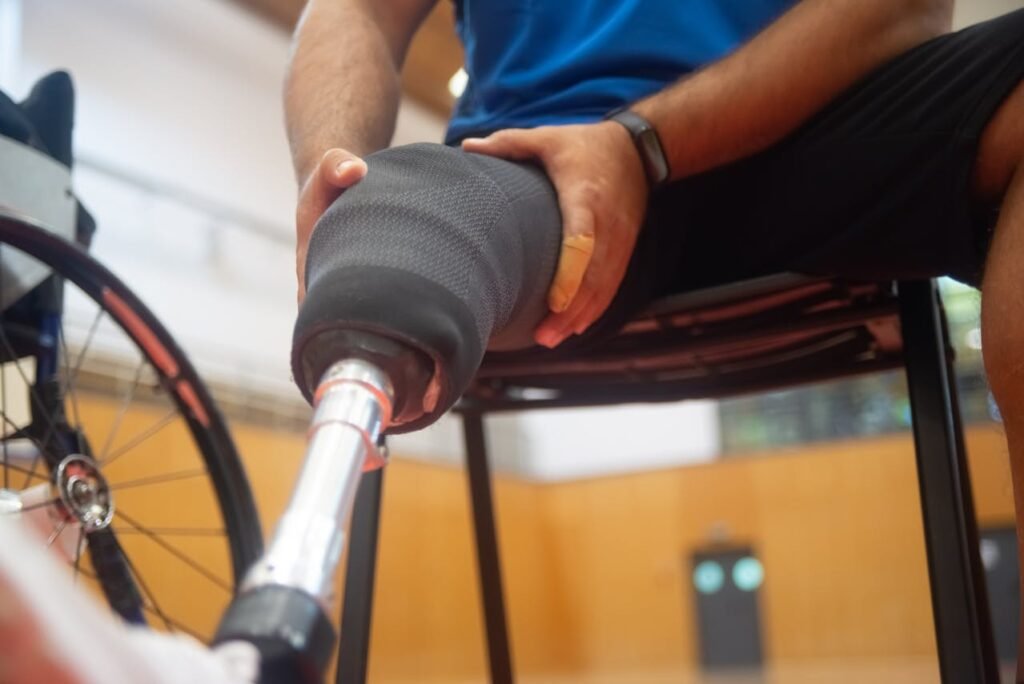
Each prosthetic trial is more than just a fitting appointment — it’s an active learning session. You’re not a passive observer; you’re part of the team working to get the best fit for you.
Before each session, remind yourself of your goal. Maybe you want to hold a cup without spilling, or walk more steadily. Having small, clear goals gives your prosthetist a better sense of what to focus on.
When you come with purpose, you leave with progress.
Share Every Sensation
During your trials, your prosthetist can observe your movements, but only you can describe what you feel. That’s why honest feedback is so important.
If something feels too tight, too loose, or slightly painful, say it right away. Even small discomforts can become big problems later if ignored. A prosthesis should never pinch, rub, or cause pain.
You might notice slight changes each time — the grip feels steadier, the alignment feels smoother. Celebrate these signs. They show that the adjustments are working.
Focus on Daily Movements
Trial sessions are not only about walking or gripping objects inside the clinic. They’re about preparing you for real life. Ask your prosthetist to help you practice tasks that you do daily — opening a bottle, typing, holding a spoon, or carrying a bag.
These small actions tell you a lot about how your prosthesis performs. What works perfectly indoors might need fine-tuning for outdoor tasks or longer use.
Practical testing helps you build muscle memory. It’s the difference between simply wearing a prosthesis and truly living with it.
Trust the Process
At times, you might feel impatient. You may wonder why so many sessions are needed when you just want to start using your limb freely. But remember — a prosthesis is not an instant solution; it’s a lifelong companion.
Trial sessions are where your body and the prosthetic slowly learn to cooperate. Each fitting builds on the last, taking you closer to a perfect match.
Rushing may save time today, but comfort and stability come from patience. Trust that every extra minute spent in fitting is preparing you for years of ease and independence.
Be Open to Adjustments
A common misconception is that once your prosthesis is made, it’s done forever. In reality, your body keeps changing. Muscles strengthen, residual limbs shrink slightly, and your movement style evolves.
Trial sessions help you find the best fit now, but follow-up fittings keep your prosthesis perfect in the long run. Stay open to small adjustments even after you start using it daily.
Think of it like tailoring your clothes — they need a few changes over time to fit you just right.
Common Mistakes to Avoid During Trials
Ignoring Discomfort
Many people try to tolerate discomfort, thinking it’s part of the adjustment process. But that’s not true. Pain or irritation is your body’s way of saying something isn’t right.
Never ignore discomfort, even if it feels minor. Speak up during the session so your prosthetist can fix it immediately. The earlier the adjustment, the faster your comfort improves.
Your prosthesis should feel natural, not forced.
Skipping Feedback
Sometimes, people hesitate to share their feelings because they don’t want to seem difficult or unsure. But clear feedback is what makes the fitting perfect.
Your prosthetist relies on your experience — not just what they see, but what you feel. If you stay silent, they may not realize that something needs correction.
You’re not complaining; you’re collaborating. The more honest you are, the better the outcome.
Comparing Your Progress to Others
Every person’s journey with prosthetics is unique. Some adapt within weeks; others take months. Comparing your progress with someone else’s can lead to unnecessary pressure.
Your limb shape, muscle strength, and personal goals are all different. What matters most is that you move forward at your own pace.
Trust your process, and measure success by your comfort and confidence, not by how quickly others adapt.
Missing Scheduled Sessions
Consistency is key in prosthetic training. Each missed session can delay your adjustment and learning curve.
If you skip fittings, your residual limb might change shape slightly, and the previous alignment might no longer fit as well. Keeping your appointments ensures smoother progress and fewer setbacks.
Treat your sessions like essential training for your freedom — because they truly are.
Expecting Instant Perfection
It’s easy to hope that your prosthesis will feel “just right” from the very first day. But that rarely happens. Even the most advanced prosthesis, like Grippy™ with its Sense of Touch™ technology, needs time to feel truly yours.
Each trial teaches your prosthetist something new about how your body responds. Adjustments take time, and comfort grows gradually.
Give yourself space to learn, adjust, and trust the process. Perfection comes step by step.
What Your Prosthetist Focuses On
Socket Fit and Comfort
The socket is where your prosthesis meets your body, and it’s the most critical part of the fitting. If it’s too tight, it hurts; if it’s too loose, it moves around and causes friction.
During every session, your prosthetist studies how your limb sits in the socket. They check pressure points, gaps, and alignment. You’ll be asked to move, stretch, and shift positions so they can observe how it behaves under real use.
Their goal is to make the socket feel like part of you — snug but never painful.
Alignment and Balance
Every prosthesis must align correctly with your body’s natural posture. Even a small misalignment can affect how you walk, stand, or hold objects.
During your trials, your prosthetist adjusts angles and weight distribution to ensure balance. For lower-limb users, this helps with smoother steps and even weight-bearing. For upper-limb users, it ensures better control and less strain on shoulders or back.
Proper alignment means less fatigue and more natural movement throughout your day.
Functionality and Real-Life Use
A prosthesis is not only about movement — it’s about doing things that matter in your daily life. Your prosthetist ensures the design supports your activities, whether that’s lifting, typing, cooking, or driving.
You’ll be guided to test the prosthesis in realistic situations. The aim is not just to make it functional but to make it empowering.
When your prosthesis helps you do what you love without pain or effort, it’s working exactly as it should.
Long-Term Comfort
Even after perfect alignment and fitting, your prosthetist looks at how the prosthesis performs over time. They’ll ask about your comfort after hours of use, not just during the trial.
They might make small design changes to reduce long-term strain or improve ventilation. These refinements ensure you can wear your prosthesis all day without worry.
Comfort over time is what transforms a prosthesis from a device into a companion.
The Emotional Side of Trial Sessions
Learning to Trust Again
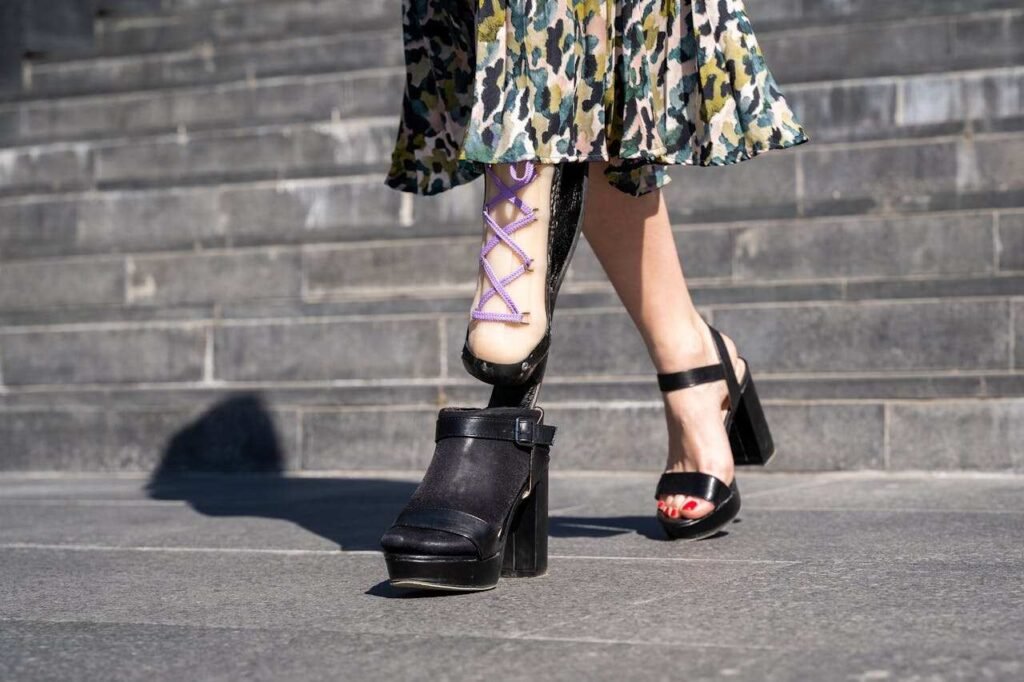
For many people, using a prosthesis is not just a physical journey but an emotional one. The first time you move your new limb can bring a wave of emotions — relief, joy, fear, and hope all at once.
Trial sessions are where that trust begins. With every small success — a steady step, a firm grip — you rebuild faith in your body’s ability to adapt.
It’s not only about learning to use a new device; it’s about learning to believe in yourself again.
Dealing with Frustration
Some days, things won’t go as planned. You might feel discomfort, or your movements may not be as smooth as you hoped. That’s completely normal.
Frustration can creep in, especially when progress feels slow. But remember — trial sessions are designed to uncover challenges early so they can be fixed. Each setback is simply a step toward a better fit.
Be kind to yourself during this time. Progress is rarely a straight line, but every trial moves you forward.
Celebrating Small Wins
Every milestone matters — even the small ones. Holding a pen, lifting a cup, taking a confident step — each is a sign that your body and prosthesis are learning to work together.
Acknowledging these moments keeps you motivated. It reminds you that healing is happening, even when you can’t see all the progress yet.
Your prosthetist celebrates these wins with you because they understand the journey behind each one.
Moving from Trial Sessions to Final Fitting
When You Know It’s Time
After several trial sessions, you’ll begin to notice a shift. Movements that once felt strange now come naturally. You start trusting your prosthesis to support you without thinking twice.
That’s when your prosthetist begins considering your final fitting. It’s not based on the number of sessions but on your readiness — physical and emotional.
Your limb should feel stable, your skin comfortable, and your confidence steady. Once those signs appear, you’re ready for your final version.
The Final Fitting Process
The final prosthesis is crafted using all the data, measurements, and feedback gathered during your trial sessions. Every adjustment made earlier now comes together in one perfectly balanced design.
Your prosthetist will fit the finished prosthesis and test it thoroughly. You’ll go through several tasks, just like before — walking, gripping, or handling objects — but this time, it’s about confirming that everything feels right.
If even the smallest discomfort appears, fine-tuning continues. The goal is a prosthesis that feels natural the moment you wear it.
Emotional Closure
Reaching the final fitting often feels like completing a long journey. For many users, it brings relief and pride. You’ve gone from uncertainty to control, from dependence to independence.
This stage also brings gratitude — for your patience, for the technology that helped, and for the professionals who stood by you.
The final fitting is not the end of the road. It’s the start of a new chapter where you live life freely again, without second thoughts about your limb.
What Happens After the Final Fitting
The Break-In Period
Even after your final prosthesis is delivered, your body needs time to fully adjust to using it every day. This is known as the break-in period.
At first, you might wear it for shorter durations — maybe a few hours a day — gradually increasing as comfort improves. This allows your skin and muscles to adapt without strain.
During this time, stay alert to any changes in how the prosthesis feels. If you notice irritation, swelling, or slipping, let your prosthetist know. Small adjustments can make a big difference in long-term comfort.
Regular Follow-Ups
A good prosthetist doesn’t just hand over your prosthesis and say goodbye. Regular check-ups ensure everything stays in perfect condition.
These follow-ups are usually scheduled every few weeks initially, then spaced out to once or twice a year. During these visits, your prosthetist checks the alignment, socket condition, and component performance.
They also help you address any new challenges as your body changes over time. Consistent follow-ups keep your prosthesis working like new.
Adapting to Real-Life Situations
Once you start using your prosthesis outside the clinic, you’ll encounter real-world situations that test its limits — stairs, uneven ground, long workdays, or lifting objects.
Don’t worry if it takes a little time to adjust. These experiences teach you how your prosthesis behaves in different conditions and what techniques work best for you.
If something feels off during these activities, take notes and discuss them in your next follow-up. Real-life feedback helps your prosthetist fine-tune performance further.
Building Strength and Endurance
Wearing a prosthesis regularly engages new muscle groups and balance systems. At first, you might feel mild fatigue or soreness — that’s normal.
Your rehabilitation therapist may recommend simple exercises to strengthen your core, back, or shoulders, depending on your limb type. These help improve endurance and reduce fatigue over long hours of use.
Think of it like fitness training for your prosthesis — you’re teaching your body to work efficiently with its new partner.
Maintaining Your Prosthesis
Daily Care Routine
Just like any piece of equipment, your prosthesis needs regular care. A few simple habits go a long way in keeping it in top condition.
Clean your socket daily with a damp cloth and mild soap to remove sweat and dust. Dry it thoroughly before wearing it again.
Inspect all joints and moving parts for signs of wear. If you use a myoelectric prosthesis, check the battery status and ensure electrodes stay clean for proper signal detection.
Good hygiene prevents skin irritation and extends the life of your prosthesis.
Handling with Care
Prosthetic limbs are durable but not indestructible. Handle them gently when putting them on or taking them off. Avoid dropping them on hard surfaces.
Keep them away from extreme heat, water, or direct sunlight for long periods. If your prosthesis gets wet accidentally, dry it immediately with a soft towel.
When not in use, store it in a clean, dry place — ideally inside a protective bag or case. Treating it with care ensures years of reliable use.
Recognizing Signs of Wear
Over time, parts like liners, sockets, or joints may wear out. You might notice loosening, squeaking, or reduced performance.
These are early signs that your prosthesis needs servicing. Avoid fixing it on your own; instead, contact your prosthetist. They can replace worn parts and restore the fit and function safely.
Timely maintenance saves both discomfort and expense later.
The Role of Technology in Maintenance
Modern prosthetics, especially bionic ones like Grippy™, often come with built-in diagnostics and smart alerts that help track performance.
Some versions can even connect with mobile apps to monitor battery levels, usage patterns, and grip strength. These tools make maintenance easier and give you more control.
Technology ensures that caring for your prosthesis is no longer a chore — it becomes part of your routine.
Life After Prosthetic Trials
Regaining Normalcy
The day you start using your prosthesis effortlessly feels like life coming full circle. You no longer think about every movement — you simply do it.
You cook, write, work, travel, and play again without the constant reminder of limitation. The prosthesis becomes a part of your identity, not an addition.
This return to normalcy is the ultimate reward for all the effort, patience, and persistence you put into your trial sessions.
Building Confidence in Public
Many people feel self-conscious about using a prosthesis in public at first. That’s completely natural. But as you grow used to it, confidence replaces hesitation.
Every compliment you receive or task you complete successfully adds to that confidence. Before long, you’ll find that people focus on your abilities, not your limb.
Your prosthesis is a symbol of resilience — a reminder that technology and determination together can overcome almost anything.
Reconnecting with Your Passions
One of the most beautiful outcomes of prosthetic rehabilitation is rediscovering your passions. Maybe it’s painting, cycling, or playing an instrument — whatever it is, your prosthesis can help you get back to it.
Trial sessions prepare you for these activities, but real joy comes when you finally do them again with ease.
With the right prosthesis and training, there’s almost nothing you can’t do.
Joining a Support Community
Connecting with others who’ve gone through similar experiences can be deeply motivating. Support groups, both online and offline, provide a space to share tips, progress, and encouragement.
You’ll meet people who understand your challenges and celebrate your victories.
At RoboBionics, many of our users stay in touch long after their fittings. They inspire new users and show that life after limb loss can be strong, fulfilling, and full of possibility.
Long-Term Adaptation and Emotional Well-Being
Growing Into Your New Normal

As weeks turn into months, your prosthesis becomes a natural part of your life. You no longer think about how to use it — you simply move, act, and live. This is the phase where your mind, body, and prosthesis have fully synced.
But adaptation doesn’t stop there. You continue learning small things every day — how to adjust to different weather, how to move more efficiently, how to handle new environments. Each small discovery makes you more confident and capable.
Over time, you begin to forget the days when you doubted yourself. Your prosthesis feels like it’s always been a part of you.
Managing Expectations
Even after full adaptation, it’s important to manage your expectations. A prosthesis, no matter how advanced, is still a tool — a powerful one, but not a replacement for the human limb.
There will be limits, but they don’t define you. Focus on what you can do with it, not what you can’t. The right mindset turns every challenge into a new skill.
Your prosthesis gives you possibilities that once felt lost, and every day you use it, you grow stronger in spirit.
Emotional Adjustment and Self-Image
Adapting emotionally is just as important as adapting physically. Some users struggle with how they look or feel after amputation. Trial sessions help rebuild not only strength but also self-acceptance.
It’s normal to feel unsure at times, especially in the beginning. But as you experience what your prosthesis allows you to do — shake hands, write, walk — you start to see it differently.
Instead of a reminder of loss, it becomes a badge of courage. You didn’t just survive; you rebuilt yourself with determination and technology.
Surround yourself with positive influences — friends, family, mentors, or support groups. Their encouragement can help you see the progress you’ve made, even when you can’t see it yourself.
Staying Mentally Healthy
Wearing a prosthesis comes with adjustments that can sometimes feel overwhelming. Taking care of your mental well-being is crucial.
Try journaling your progress — noting even small achievements. Celebrate them. This helps you stay motivated and see how far you’ve come.
If you ever feel emotionally stuck or frustrated, don’t hesitate to talk to a counselor or rehabilitation psychologist. They can help you cope with the emotional ups and downs that come with adapting to prosthetic life.
Your mental strength is just as vital as physical comfort — and nurturing both makes you unstoppable.
How to Choose the Right Prosthetic Partner
Look Beyond the Device
Choosing the right prosthetic provider isn’t just about picking a brand or model. It’s about finding a team that listens to you, understands your needs, and stays with you through your journey.
A good prosthetic partner doesn’t hand you a device and move on. They walk beside you through every stage — from your first trial session to long-term follow-up care.
They focus not only on technology but on empathy. They know that behind every fitting is a person who wants their life back.
Check Their Experience and Approach
When selecting a prosthetic provider, ask how much experience they have with your specific type of amputation. Every case is unique, and expertise matters.
Observe how they communicate during your first visit. Do they listen carefully to your concerns? Do they explain things clearly, without rushing or using technical jargon? That’s a sign of a caring professional.
Experience and empathy together make a world of difference in your comfort and satisfaction.
Assess the Technology They Offer
The prosthetics industry has evolved rapidly in recent years. Look for a provider that offers advanced, proven technology that matches your lifestyle and budget.
For example, at RoboBionics, we’ve built the Grippy™ Bionic Hand with our patented Sense of Touch™ system — designed to make users feel real tactile feedback. It’s lightweight, durable, and crafted with 60 of its 64 components made in India.
Technology like this doesn’t just move your hand; it helps you reconnect with touch and feel again. Always choose a provider that blends innovation with affordability.
Consider Aftercare and Support
The real test of a good prosthetic partner begins after you’ve received your device. Regular follow-ups, repairs, and emotional support all contribute to long-term success.
Ask if they provide easy access to service centers, training sessions, or teleconsultations. Reliable aftercare ensures your prosthesis keeps performing well as your needs evolve.
Your relationship with your prosthetic provider should feel like a partnership, not a one-time transaction.
Evaluate the Training and Rehabilitation Support
A prosthesis is only as effective as your ability to use it comfortably. That’s where rehabilitation plays a key role.
Choose a provider who offers physiotherapy or occupational therapy support. They help you strengthen your muscles, improve balance, and learn advanced movements.
At RoboBionics, for instance, users also benefit from our Gamified Rehabilitation App — a fun, interactive way to practice movements and improve muscle control at home. This kind of support keeps your progress steady even after the fitting is done.
The Lifelong Journey Ahead
Embracing Change
Over time, your needs will change. Your work might demand new movements, or your body might shift slightly in shape. When that happens, you’ll return for small adjustments or upgrades.
These moments remind you that adaptation is an ongoing process. The goal isn’t to have one perfect prosthesis forever — it’s to keep evolving with your lifestyle.
Think of your prosthetic journey as a partnership between you, your prosthetist, and technology that grows with you.
Inspiring Others
Once you’ve mastered your prosthesis, you become a beacon of hope for others just beginning their journey. Sharing your story — your struggles, your small wins, your lessons — can inspire someone who’s feeling lost.
You’ll realize that your courage has the power to light the way for someone else. That’s one of the most meaningful outcomes of this entire process.
Living Fully, Without Limits
A prosthetic limb doesn’t define you — it supports you. It gives you the power to live fully again, to work, to love, to dream, and to achieve.
Each trial session, every adjustment, every moment of frustration has brought you to this point — where you no longer think about what you’ve lost but celebrate what you’ve regained.
At RoboBionics, we’ve seen hundreds of people rebuild their lives with strength and grace. With every success story, we’re reminded why we do what we do: to make advanced prosthetics accessible, affordable, and life-changing for all.
Taking the Next Step
If you or someone you know is ready to begin their prosthetic journey, don’t wait. The right time is now.
Book a free demo with RoboBionics today and experience what the right fit, the right care, and the right technology can do for you.
Visit www.robobionics.in/bookdemo to get started.
You’ve come this far — now take the next step toward a more confident, independent, and empowered life.



